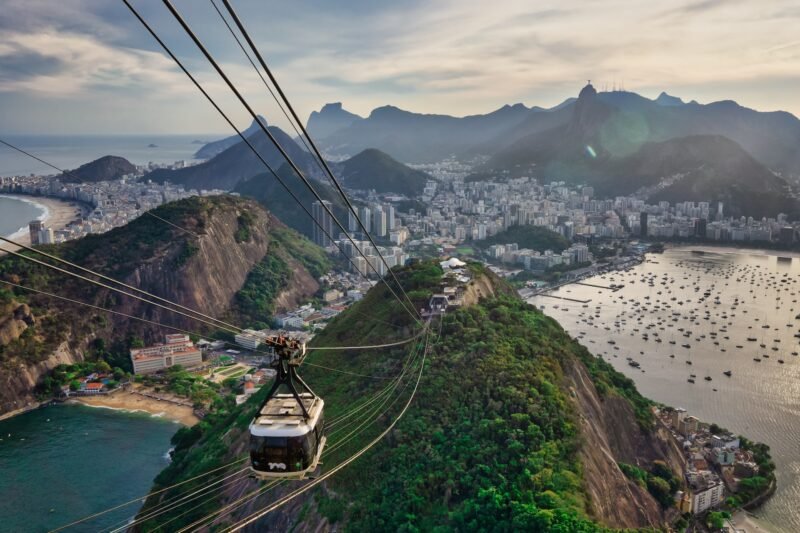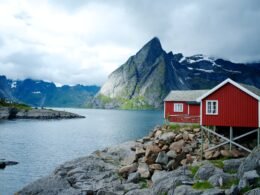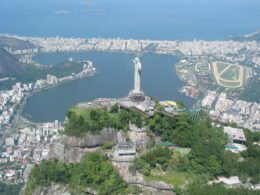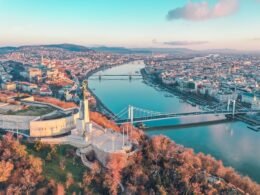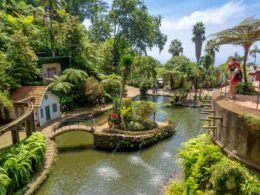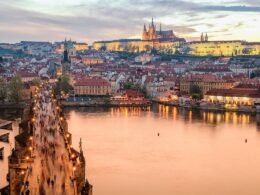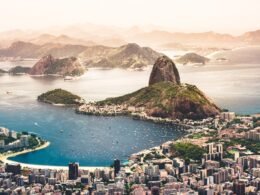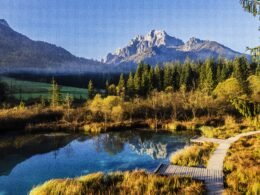As the largest country in South America, Brazil is full of amazing experiences visitors can enjoy. Brazil is the 4th largest country in the world, and it’s impossible to see everything in just one trip. If you only have 10 days to visit Brazil, here’s how to best enjoy the country’s vibrant culture and natural beauty.
While on your trip to Brazil, you can spend time exploring the bustling streets of Rio, relaxing on stunning beaches, and seeing the country’s natural wonders. On this trip, you’ll spend your time in 3 areas of Brazil rather than spending too many of your days in the country traveling from one place to another.
Day 1: Rio de Janeiro
Brazil’s second-largest city is an incredibly popular destination for travelers. The perfect weather combined with sandy beaches and vibrant nightlife draws visitors from all over the world to Rio de Janeiro. There’s a lot to do in Rio de Janeiro, more than you could do even if you had weeks in the city, but you’ll have time to see a few of the best attractions.
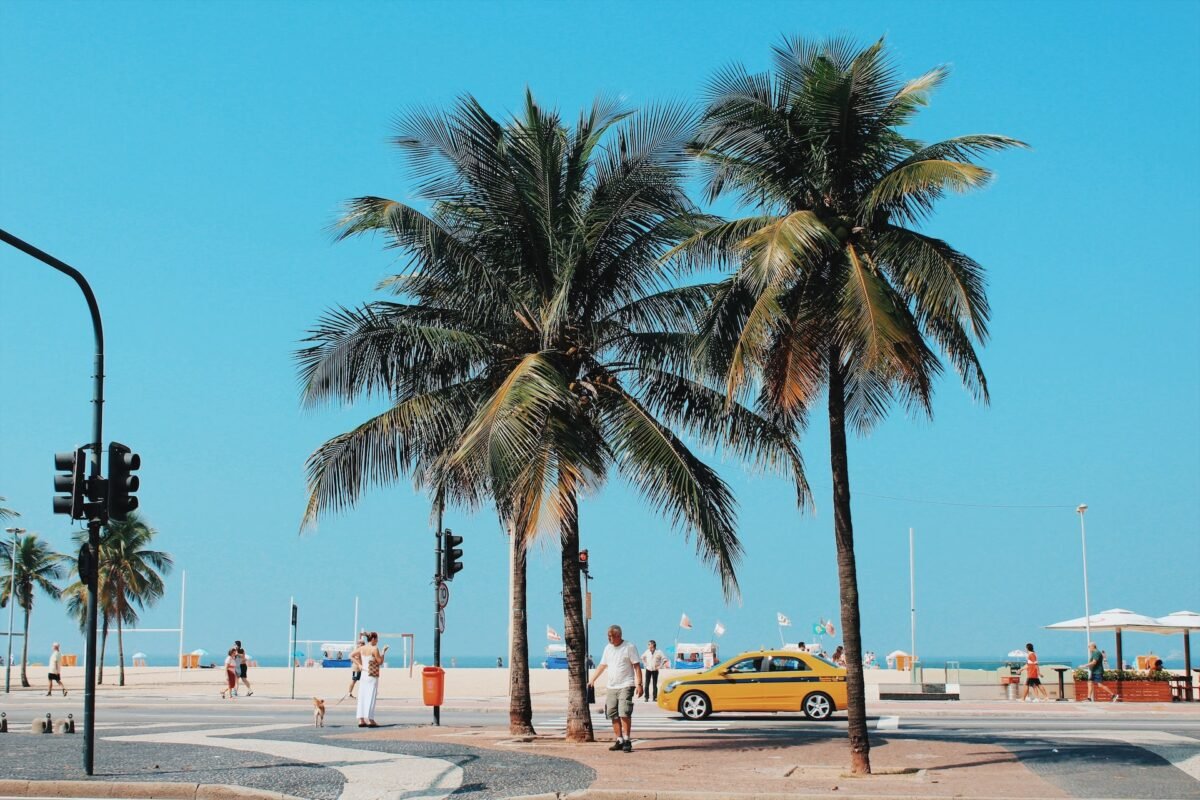
What to do and see in Rio de Janeiro?
After you arrive in Rio de Janeiro, spend your first day recovering from your travels and soaking up the sun on the beach. The city has many beaches, but you’ll be visiting the most popular–Copacabana. The beach is 3 miles long and surrounded by hills and mountains, so the views are beautiful no matter which direction you look.
You can easily spend all your time relaxing under an umbrella, but there’s more to do at Copacabana if you’re up for it. You can walk along the Copacabana Promenade, go shopping along Avenida Atlântica, or visit the museum at Fort Copacabana.
Where to eat in Rio de Janeiro?
When you’re ready to eat, head to Avenida Atlântica for great restaurants. At Sorveteria Momo Gelato, you’ll find delicious gelato cakes. If you want to enjoy acai bowls, try out Bibi Sucos. Don’t want to leave the beach? Get your drinks at Gosto de Mar. You can also try some of the kiosks along the beach. The Brahma, Rainbow Pizzaria, and Sushi Leblon are all very popular.
Where to stay in Rio de Janeiro?
- $$$ – Windsor California Hotel
- $$ – Ipanema Inn Hotel
- $ – Books Hostel
Day 2: Rio de Janeiro
The city is home to many iconic sites, and there are several that you can’t miss during your stay in Rio de Janeiro. Today, you’ll spend your time seeing the most famous attractions in the city.

What to do and see in Rio de Janeiro?
The first thing you can’t skip in Rio de Janeiro is going to the top of Sugarloaf Mountain to see the views from above. You’ll get to the top by taking the Sugarloaf tram. The tram, which has 3 stations, begins with a station at sea level. The second station stops at Morro da Orca. If you’d like, you can explore the hill before continuing up to the third and final stop on the tram. The views from Sugarloaf Mountain are entirely worth the trip up.
The next must-do in the city is to see the statue of Christ the Redeemer that looks over Rio from Corcovado Mountain. The statue, which was finished in 1931, is located in Tijuca Forest National Park. The fastest way to get to the statue is with a rideshare company. It’s also possible to take public transportation or hike to the statue. If you decide to hike, plan for it to take about 3 hours. You’ll also want to go in a large group or hire a guide.
Where to eat in Rio de Janeiro?
Between visiting Sugarloaf and Corcovado, get lunch in Botafogo. The area is growing its culinary scene and is the perfect stop for foodies. Try out Marchezinho for French-inspired cuisine made using local ingredients. For a healthy, delicious lunch, try Casa Viso where you can enjoy a gourmet buffet with sushi. While you’re in Botafogo, check out the Slow Bakery to pick up some of the special sourdough bread made with a 30-hour fermentation process.
Day 3: Rio de Janeiro
There’s so much going on in Rio that it can be easy to overlook its historical areas. Today, you’ll spend your time exploring several of the historical and cultural attractions concentrated mainly in the city’s downtown area.

What to do and see in Rio de Janeiro?
You can either explore the attractions in Rio on your own or you can take a tour. If you decide to go by yourself, here are a few sites you might be interested in visiting.
- Centro Cultural Banco do Brasil
- São Bento Monastery
- Sambadrome
- Metropolitan Cathedral
- Candelaria church
- São Francisco da Penitência
- Arch of Lapa
- Museu Histórico Nacional
- Santana Park
- Royal Portuguese Reading
Where to eat in Rio de Janeiro?
When you’re ready to eat downtown, you’ll have an overwhelming number of options. One of the most popular places to eat is Confeitaria Colombo, a restaurant built during Rio’s Belle Epoque. The food is delicious, and the decor with elegant wood furniture, enormous chandeliers, and delightful stained glass is incredibly impressive. If you’d prefer a relaxed, casual meal instead, try out Cafe Gaucho. You can get a great sandwich or light snack along with a cold beer.
Day 4: Rio de Janeiro
On your last day in Rio, spend your time visiting some of the most beautiful outdoor spaces in the city.
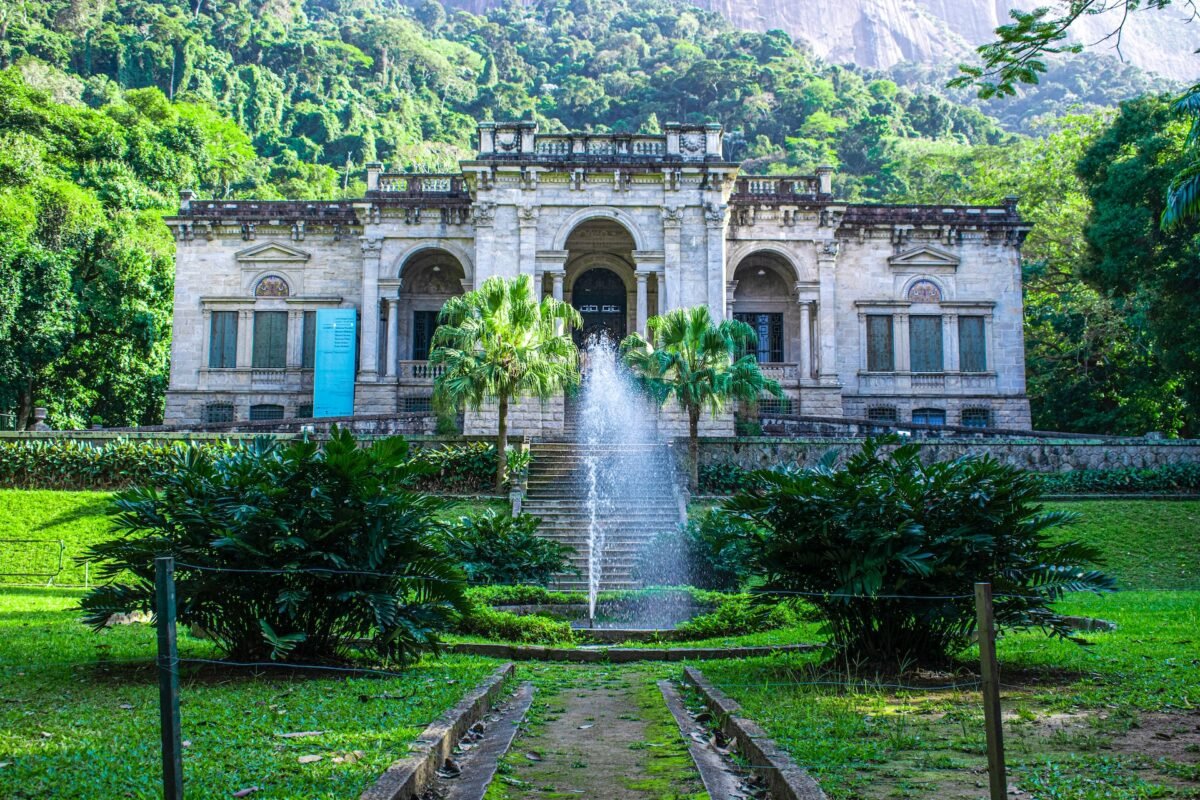
What to do and see in Rio de Janeiro?
Begin your day with a visit to Rio de Janeiro’s Botanical Garden. It’s one of the most impressive botanical gardens in the world thanks to the beauty of its layout along with the sheer number of plants in the collection. Besides the vegetation, you’ll also spot toucans, hawks, wild monkeys, and marmosets making their way through the gardens. Don’t be surprised if you find yourself spending several hours taking in everything there is to see here.
In the afternoon, visit Lage Park right next to the Botanical Gardens. This public park is located near the base of the Corcovado but doesn’t have as many tourists as some other areas in the city. You can take the pathways throughout the surrounding forests and enjoy a peaceful, tranquil time. It’s an enchanting area to visit.
Where to eat in Rio de Janeiro?
At the Botanical Gardens, you can stop by La Bicyclette to enjoy traditional French bread along with other dishes for breakfast or lunch. If you’d rather eat at Lage Park, there’s a restaurant called Plage Cafe, where you can get substantial dishes like monkfish, rabanada, or steaks.
Day 5: Iguazu Falls
Travel time: 2-hour flight
Iguazu Falls on the border between Brazil and Argentina are one of the most beautiful waterfalls in the world. The hundreds of waterfalls cascading into each other are an incredibly impressive sight that you can’t fully imagine until you’re actually there.
The fastest way to get from Rio to the falls is to take a flight from Rio to Foz do Iguaçu. Other forms of transportation are available, but they’ll take up nearly a full day of your limited time in Brazil.

What to do and see near Iguazu Falls?
Once you’ve made it to Foz do Iguaçu, you’ll need transportation to the Visitor Center of Iguazu Falls. Your hotel can help you find a shuttle, you can take a public bus, you can rent a car, or you can go on a tour that provides transportation.
When you reach the Visitor Center and get your ticket, you’ll then have a 1-mile hike through the jungle to reach Iguazu Falls. There are plenty of beautiful views along the way, and at the end of the trail, there’s a viewing platform that allows you to see the falls from another angle.
Where to eat near Iguazu Falls?
While in Foz do Iguaçu, you have several options for a good meal. To continue enjoying views of the falls, eat at Porto Canoas, a restaurant serving Brazillian dishes. For seafood and fish, try Restaurante Zaragoza where you’ll mostly find traditional Portuguese and Spanish dishes.
Where to stay near Iguazu Falls?
- $$$ – Belmond Hotel das Cataratas
- $$ – Recanto Cataratas Thermas Resort
- $ – Del Rey Quality Hotel
Day 6: Iguazu Falls
Spending just one day near Iguazu Falls would make your time here too rushed. On your second day here, you have a couple of options. You can either view the falls from the Argentina side or you can explore a few other sites near Iguazu Falls on the Brazil side.

What to do and see near Iguazu Falls?
After seeing Iguazu Falls from Brazil, you might also want to see it from Argentina. If that’s the case, you’ll need to plan ahead to see if there are any visa requirements to allow you to enter Argentina. The viewpoint from this side is over the falls so you don’t get the same sense of scale, but there are better paths to explore near the falls in Argentina.
If you don’t want to go to Argentina to see the falls, there are several cool things to do still. To see the falls again from a different perspective, take a boat ride to get closer to the falls. Depending on when you visit Brazil, you may need to book a boat tour in advance to make sure you get a seat.
You can also visit the Parque das Aves just outside the Iguazu Falls National Park. This bird sanctuary works to support and rescue Atlantic rainforest birds. Your money will go to help the sanctuary, and you’ll get a chance to see tropical birds from just a short distance.
Where to eat near Iguazu Falls?
If you decide to go to Argentina, make sure to eat at La Rueda in Puerto Iguazu. The casual restaurant has outstanding fish, chicken, and homemade pasta. When you head back to Foz do Iguaçu, take some time to try out a few beverages. Go to Icebar Iguazu to cool down (literally and figuratively) with drinks served in ice glasses. Another good stop is Rock Falls Tap House. You can try out different craft beers here while also enjoying steaks, ribs, and other filling dishes.
Day 7: Florianopolis
Travel time: 2.5-hour flight
Just off the southern coast of Brazil, Florianopolis is an incredible island with a vibrant citylife. Get ready to enjoy some of the best beaches in Brazil, take advantage of the nightlife, and visit charming fishing towns.
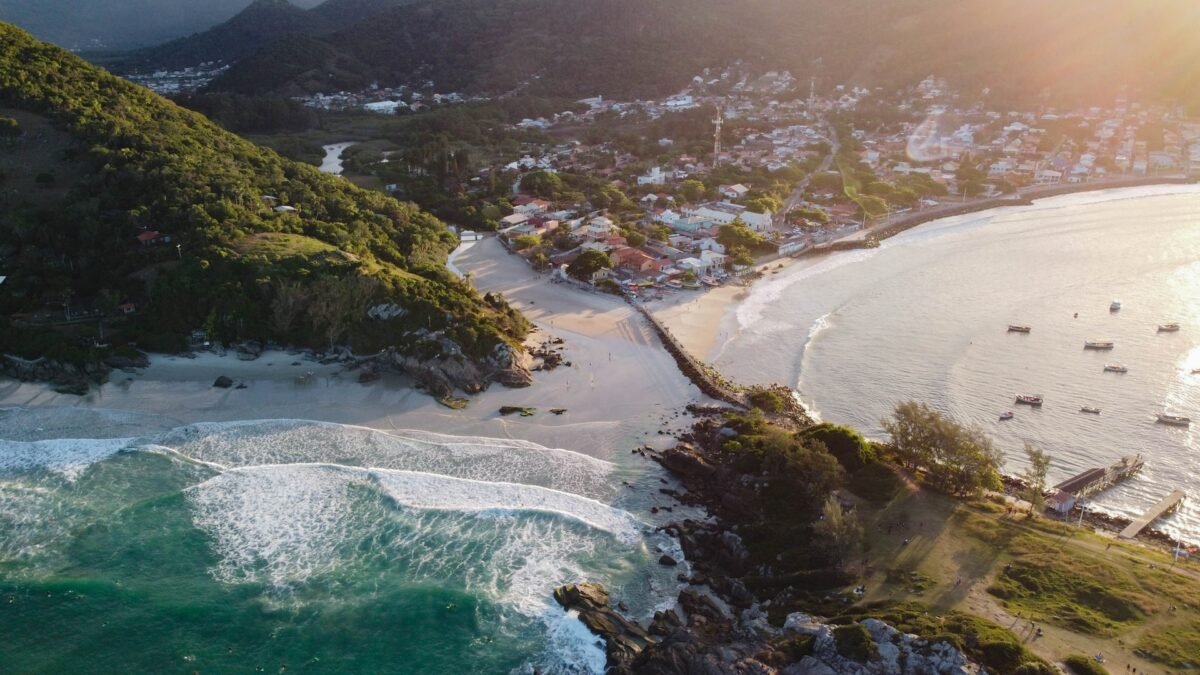
What to do and see in Florianopolis?
Spend your first day in Florianopolis on the beaches. With more than 40 beaches in Floripa, there’s something for everyone. Forte Beach in the northern part of the island generally tends to be quiet and relaxing. For the widest variety of activities including surfing and paragliding, head to Mole Beach. One of the most popular beaches for tourists is Barra da Lagoa Little Beach. The Barra da Lagoa District still feels like the community of fishermen it once was.
Where to eat in Florianopolis?
While on the beach, get a frozen acai bowl at one of the kiosks or juice bars to cool down and give you energy for the rest of the day. For one of the best views in Floripa, head to Pier 54. You can enjoy fresh seafood while looking out over the water.
Where to stay in Florianopolis?
- $$$ – LK Design Hotel
- $$ – Porto da Ilha Hotel
- $ – Submarino Hostel
Day 8: Florianopolis
Floripa’s beaches are great for lounging, but some of them are also great places for hiking. Along the south side of the island, you’ll find hikes with beautiful views. One of the best hikes is Logoinha do Leste.

What to do and see in Florianopolis?
Plan to spend at least half a day, if not an entire day, hiking to Logoinha do Leste. The pathway is steep, but you can stop to swim in either the freshwater lagoon or the clear ocean water about an hour into the hike. For the best views continue to hike up the large cliff to get to the top and have the chance to look out over the area.
For a slightly less strenuous hike, you can hike to Naufragados. The hike takes about 1.5 hours to reach the best viewpoints. While the view is not quite as perfect as the hike to Logoinha do Leste, the trip is less tiring.
Where to eat in Florianopolis?
You’ll need to pack a lunch to bring with you while hiking. Once you’ve finished hiking, consider trying Ostradamus Restaurant. The Brazilian oysters here are worth trying for anyone who appreciates seafood.
Day 9: Florianopolis
The entire island is full of incredible spots. Today, you’ll explore two more areas in Florianopolis. One of those areas is Campeche Island. You’ll need to take a boat trip to access the island. Because it’s an archeological site, Campeche Island has a daily visitor limit.

What to do and see in Florianopolis?
Visit the white sandy beaches and cool, calm waters of Campeche Island in the morning. The island is populated with Atlantic Forest and there are 21 different archeological sites around the area. There are multiple trails you can hike around Campeche Island.
Keep your day active throughout the afternoon by going to the Joaquina Dunes. These white sand dunes are well known because people enjoy surfing the sand. You can rent or buy a board if it’s something you want to try. Otherwise, you can sit back and take in the novel sight of people surfing on sand dunes.
Where to eat in Florianopolis?
There is just one restaurant on Campeche Island. So either plan to eat there or pack a picnic lunch to take with you. For drinks and dinner in the evening, make your way to the center of Florianopolis to Cité Rooftop. You can enjoy classic cocktails, delicious food, and beautiful views at this stylish rooftop bar.
Day 10: Florianopolis
Florianopolis is most famous for its beaches, but it has a charming Old Town as well. On the last day of your trip to Brazil, spend your time enjoying one more morning on the beach. Then, explore a few of the historical sites in Florianopolis.

What to do and see in Florianopolis?
With so many beaches in Florianopolis, it’s impossible to see them all in a single trip. Rather than rushing around, pick one more to see today. Praia Moçambique tends to have fewer visitors making it the perfect place to surf or relax. Praia Galheta is well known for having excellent waves and is a good choice if you’re looking to spend the morning surfing. Pântano do Sul is farther away from the city center but is perfect if you want to learn more about the island’s fishing culture.
Spend the afternoon visiting a few of the historic and cultural sites around the area. Here are some of the most popular things to see.
- Forte Sao Jose da Ponta Grossa
- Palacio Cruz e Sousa
- Igreja de Sant’Anna
- Santo Antonio de Ratones fort
- Hercilio Luz Bridge
Where to eat in Florianopolis?
Take the time to stop at O Timoneiro to try the breaded shrimp with coconut and pineapple. It’s one of the best places to enjoy the island’s fresh seafood. Another good option for seafood lovers is Sabor da Costa. Here you’ll find lovely baked fish as well as an extensive wine menu and great views.
Useful tips for traveling in Brazil:
Brazil is such a large, diverse country that it’s impossible to make blanket statements about the region. However, there are a few tips that can be helpful to know.
- Subways in some cities have cars that are for women only during certain hours. Pay attention to the signs or you could end up getting a fine.
- If you decide to visit the rainforest, go with a reputable guide for your safety.
- Most of Brazil is relatively affordable, but you can easily spend more money than you planned in larger cities and popular tourist areas.

The best time to visit Brazil:
The best time to visit Brazil depends on what you want to do there. The warmest months are from November to March, and this is also when celebrations like New Year and Carnival take place. July and August are also nice months to visit some of Brazil’s warmest areas because the weather cools down a bit.
What is the currency of Brazil?
Brazil’s currency is the Brazilian real.
Can you drink tap water in Brazil?
It is not generally recommended that you drink tap water while in Brazil. There are some areas where the tap water is just fine, but it’s better for visitors to stick to bottled water as a precaution. If you do want to drink tap water, ask the staff at your hotel before drinking. They’ll be able to tell you if the water is ok or not.
The language of Brazil:
Portuguese is the most widely spoken language in Brazil. There are some differences between Brazilian Portuguese and European Portuguese, but the differences are not extensive. English is not widely spoken in Brazil, so it’s especially helpful to know a few phrases in Portuguese when traveling.
Bom día – Good morning
Oí/Olá – Hello
Por favor – Please
Obrigado/a – Thank you
Sim – Yes
Não – No
Is Brazil safe?
Brzail has a reputation among travelers as a more dangerous destination to visit. However, violent crime isn’t a common occurrence in areas where tourists are most likely to be. Petty theft and street crime are a larger risk for most visitors.
Just like in any area, be aware of your surroundings. Avoid walking alone at night and avoid bringing any valuables or unnecessary amounts of cash. While you should be vigilant, many visitors come to Brazil and don’t have any issues.
Final thoughts:

Now you’re ready to get a small taste of South America’s largest country. Enjoy your time visiting Brazil!
As you plan your trip, check out the rest of our guides about Brazil. If you’re looking for more places to visit near Brazil, see our guides to Argentina or our itinerary for how to spend one month in South America.






